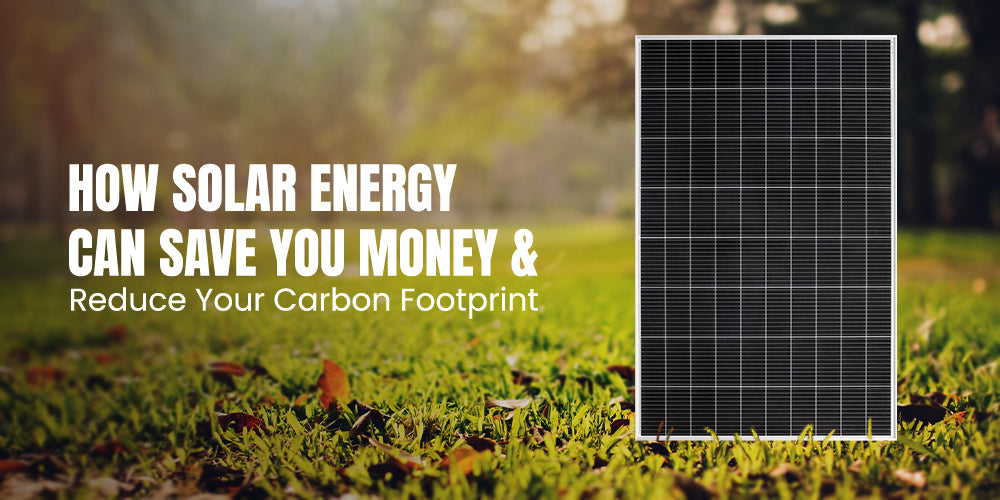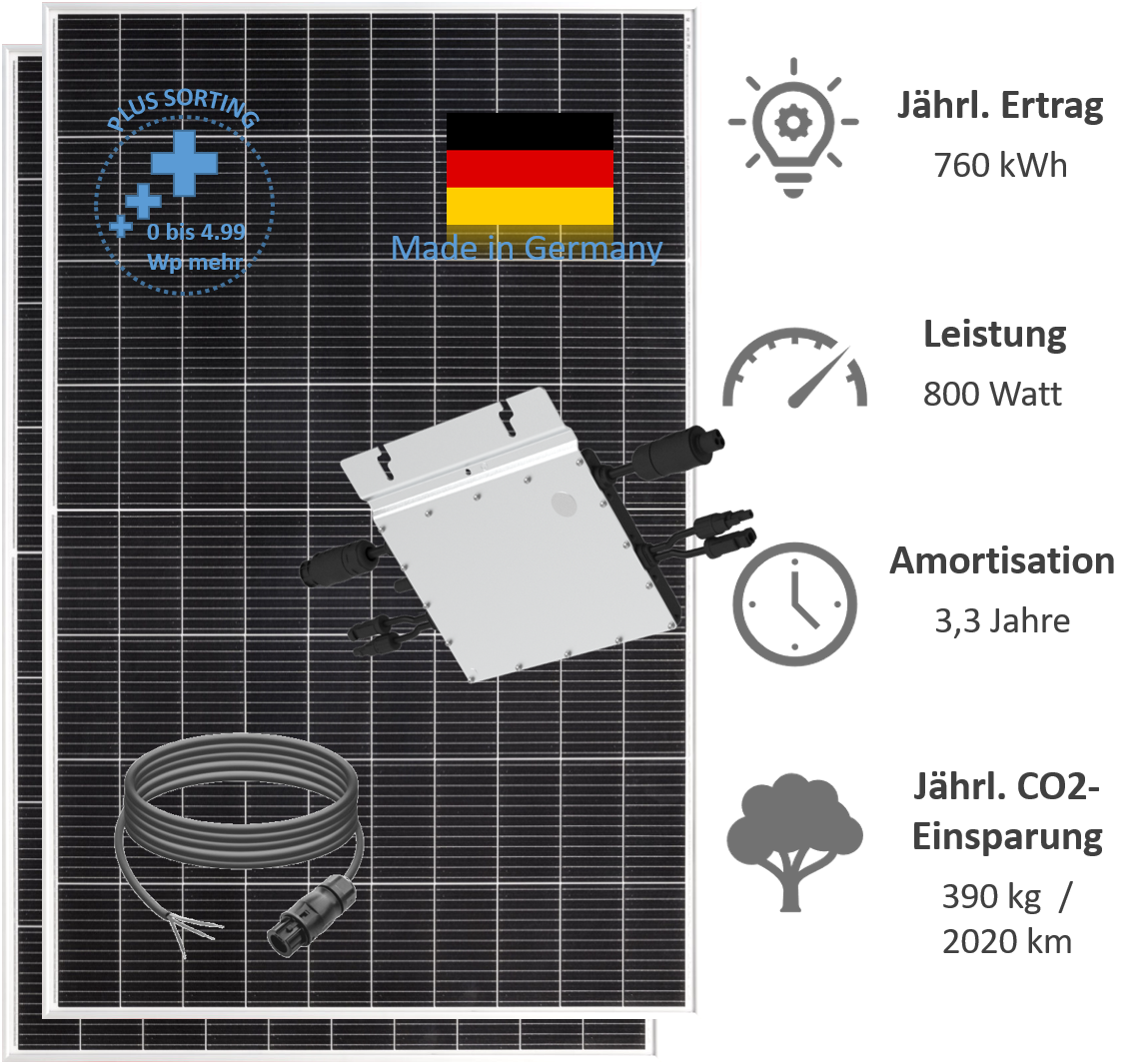The inverter, the center of the balcony power plant
The inverter ensures that generated electricity can be used in our households. The solar modules supply direct current, our power grid and household electronics run on alternating current. The inverter is used to convert the current from direct current to alternating current. We'd be happy to show you the basics.
Functionally, one can say that the direction of the current is constantly and quickly changed in the inverter. However, the direct current generated here would not yet be suitable for your household electricity. In order to obtain a suitable sinusoidal alternating current, it is helpful to use an oscillator whose output current is more harmonic and generates fewer harmonics. Another difficulty is the permanent change in voltage to which electricity production with solar is subject (e.g. clouds move in front of the sun and shadows fall on the module). With pulse width modulation, the inverter can provide a stable output voltage even if the input voltage is constantly changing. Maximum Power Point Tracking (MPPT) constantly determines the right module voltage with more than 100 calls per second, to provide the highest current output. A system called RPC - Reactive Power Control - is used to manage power peaks from photovoltaics with the power grid.
Here is the technology in detail:

The picture shows that many individual components are installed twice. The reason for this is that the current from two solar modules is "changed" separately (one module is connected on the left and the other on the right). This has the advantage that even with shadows on one module, the power of the other module can still be fully processed and it does not lead to weaknesses in the overall system.
Let's now build the bridge to the balcony power plant and the current situation. Current world events have turned the already very tense situation in the energy sector into a crisis. There are no longer longer price guarantees and the current electricity prices are 40 cents and more per kilowatt hour. In order to get the reins back into your own hands, producing your own electricity is an increasingly popular alternative. Especially with the balcony power plant, everyone, whether tenants or owners, can start electricity production and thus reduce costs and get them under control.
A balcony power plant consists of 1-2 normal solar modules, each with a peak output of 200-400 watts. These are mounted at the desired location aligned with the sun. There is also a micro-inverter with an output power of up to 600 watts (600 watts of inverter power is the limit for simplified registration of a small generation system). The small power station can then be connected to an existing socket in self-assembly.
The inverter market is quite large and the boom means that new manufacturers are entering the market or dealers are offering devices that do not comply with German standards or are unsuitable. The following things should be noted
- Compliance with VDE-AR-N 4105 (permissibility/compatibility to feed electricity into the German power grid)
- NA protection (switches off the inverter immediately as soon as it is disconnected from the grid, e.g. when the plug is pulled)
- Output power at 600 watts (for simplified registration of the system)
- Warranty length (so that your investment is worthwhile and protected)
- Module power range of the inverter to match the module (so that the inverter is not "overwhelmed")
- Communication/Wlan (to monitor electricity production)
Here again in detail:
The VDE application rule VDE-AR-N 4105 and 4100 "TAR low voltage" summarize the technical requirements that apply to the planning, construction, connection and operation of all customer systems - i.e. reference systems, generation systems and storage - to the low-voltage network of the network operator must be observed.
Inverters must have built-in grid and system protection, also known as NA protection . This ensures that the inverter switches off immediately when the mains voltage is gone. This can be the case if the balcony power station is unplugged or the circuit's residual current circuit breaker trips. Tests in the laboratory with various models have also shown that the NA protection works so quickly and reliably that it is impossible to suffer an electric shock. To refrain from supposed bargains on Amazon, Ebay or other platforms and only buy inverters that comply with the standard.
When purchasing the inverter, it is also important to ensure that the connection values of the solar modules match the inverter . In the data sheet you can read the permissible range of the operating voltage. The modules must supply the lower range of the operating voltage so that the inverter can produce without any problems. However, if the solar module voltage exceeds the maximum, this can lead to failure of the inverter.
In order to achieve the highest possible performance, it must also be ensured that the Maximun Power Current is compatible with the solar module. Most microinverters in the 600 watt range are designed to split power between 2 inputs. The maximum power of large modules with 400 watts and more cannot be exhausted here, since the inverters were only planned for two modules of 300/350 watts and not for one large one.
If the maximum operating voltage is not exceeded, more modules can be connected than the inverter can handle. In this way, the electricity yield can be increased in bad weather and in the less sunny seasons. In the summer, the inverter then only draws part of the power available from the modules.
When connecting the inverter to the power grid, there are different opinions and no clear regulation. According to the VDE-AR-N 4105 standard, it must be a so-called Wieland socket or a connection that is protected against being pulled out and protected against accidental contact. The advantage is the conformity with the standard, also with regard to the network operators, the disadvantage are additional costs, loss of transparency and, in principle, the connection must be made by an electrician. With the Schuko plug it looks a little different and here the layman can of course connect the micro-inverter to the existing socket independently. The inverter recognizes where the phase and zero phase are and feeds in correctly accordingly. The electricity production can be evaluated using an energy meter.
We hope we were able to give a good overview of the individual functions and could provide an interesting contribution for you. We wish good electricity production.
Here to the next post The optimal location & assembly of the balcony power plant
Plug-in solar & balcony power plants are also worthwhile for your household! Click here for the full article from the consumer advice center
Here you will find more blog posts on the subject of balcony power plants
Back to products or buy now









